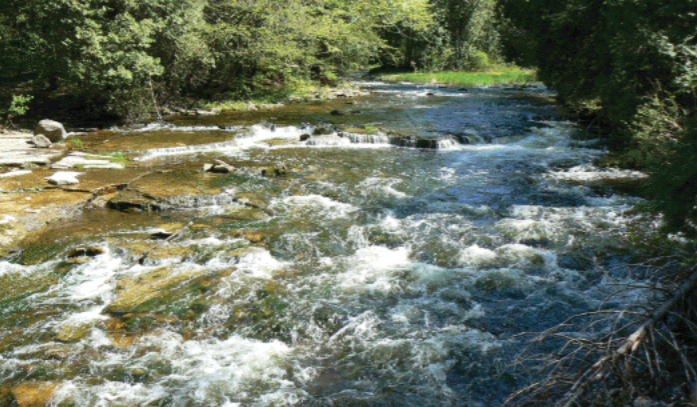Officials from the local conservation authorities are calling the proposed changes to the Conservation Authority Act, irresponsible, dangerous and without proper consultation.
“I believe that these changes will be to the detriment of all Ontarians,” said Tim Lanthier, CAO of Grey Sauble Conservation Authority. “Based on my initial review, I am quite concerned that these changes will dramatically impact conservation authorities and the communities that we serve.”
Through the 2020 budget document, the province of Ontario announced changes to the Conservation Authorities Act (CAA) through Bill 229 on Thursday.
Conservation Authorities (CA) are science-based, non-partisan public sector organizations that review permit applications consistently through the requirements set forth under Section 28 of the CAA.
The province of Ontario currently has 36 CAs that focus efforts on managing flood control, water quality issues, permits for construction areas and maintenance of conservation lands.
“A large role of the CAs is protecting people and property from natural hazards, such as flooding and erosion. These most recent changes to the CAA and the Planning Act significantly undermine the ability of conservation authorities to successfully do this,” Lanthier continued.
Doug Hevenor, CAO of Nottawasaga Conservation Authority agrees, stating that the proposed changes “relinquish our role by taking away our ability to provide science-based input on development applications. It restricts our ability to protect lives and infrastructure here in Ontario.”
Essentially, the changes being introduced will allow the Ministry of Natural Resources and Forestry to take over decision-making on developments in the province.
Byway of the proposed changes, developers would be able to appeal decisions made by CAs directly to the ministry.
“The new changes, predominantly those changes to Section 28 of the Act (development regulations), will introduce new appeal processes which could significantly slow down the permitting process creating delays and more red tape,” Hevenor explained.
"The removal of Stop (work) Order Section 30.4 of the Act is potentially harmful as well. Without this tool, CAs must obtain an injunction to stop unauthorized activities, which represents a significant cost to the taxpayers. Often, it is these same activities that can cause the greatest damage to the environmental impacts on water quality, water quantity and the overall health of our environment,” said Hevenor.
The proposed changes also direct board members to act only on the behalf of the municipality, instead of the watershed and its residents, which both CAO say contradicts the fiduciary duty of board members and compromises the CAs ability to protect local ecosystems.
"It puts an individual municipal interest above the broader watershed interests further to the purpose of the Act and restricting watershed management,” Hevenor said.
Under the new rules, CAs will also be barred from appealing a municipal planning decision to the Local Planning Appeal Tribunal (LPAT), unless requested through the municipality. This will also remove the right to appeal planning decisions as a landowner.
“Even as landowners, CAs would not have the ability to appeal to LPAT,” Hevenor continued.
Following the announcement of the changes, conservation authorities throughout the province began voicing their concerns that by allowing appeals to go directly to the minister it politicizes a process that should not be political, and, if passed, will give the province the ability to overrule concerns raised by science.
“To provide permitting authority to the Minister of Natural Resources and Forestry would take science out of the process, effectively politicizing the permits and potentially allowing development that is shown to be unsafe or damaging to the natural environment,” the NVCA stated in a news release.
According to the Ministry of the Environment, Conservation and Parks (MECP), plans and consultations surrounding these changes have been underway since April 2019 and included a series of five consultation meetings held across the province.
According to Hevenor, the chair of NVCA, along with the vice-chair and senior management met with the MECP staff in Toronto to speak specifically about the NVCA’s operations and challenges.
“Earlier this year, we also participated in the Barrie Stakeholder engagement hosted by the MECP with representatives primarily invited from municipalities, CAs, agriculture, landowner and development sectors. Conservation Ontario was a presenter at these sessions,” Hevenor said.
According to Lanthier, the changes are being introduced without due process and proper consultation from stakeholders and the public.
“There have been no consultations around the changes introduced through last week’s budget bill. These changes appear to be very one-sided and I believe that the province is ignoring the voice of a large portion of the population,” he said.
Lanthier adds the consultations on the 2019 changes to the Act were insufficient, and he has, "yet to actually see the results from those consultations.”
“Ontario’s CAs have been more than willing to meet with the provincial staff to come to an amicable solution to any issues. However, the province has chosen to disregard this and to disregard due process,” he said. “I am also very concerned that these changes are being presented through a budget bill and have not provided the people of Ontario with adequate opportunity to provide review and comment.”
Members of the public who may be concerned about the proposed changes are still able to voice their concerns to members of parliament, the Minister of Environment, Minister of Municipal Affairs and Minister of Natural Resources.
“The principle of managing the watershed as a whole (or integrated watershed management) is important because the surface water features and stormwater runoff within a watershed ultimately drain to other bodies of water,” added Hevenor. “It is essential to consider these downstream impacts when developing and implementing water quality protection and restoration actions. Everything upstream ends up downstream. It is how we protect people and the environment.”
The first reading of Bill 229 was conducted on Nov. 5. A full summary of the proposed changes can be found on the Environmental Registry of Ontario website.
